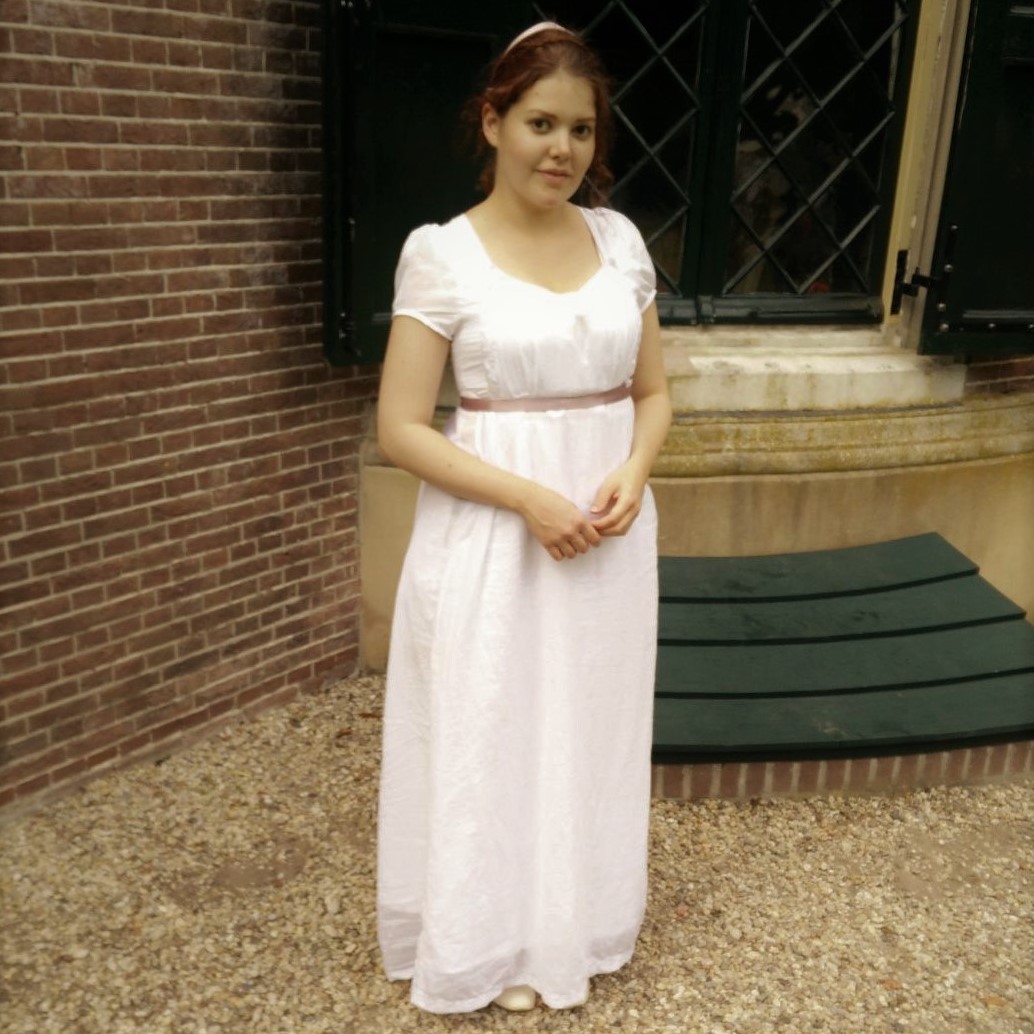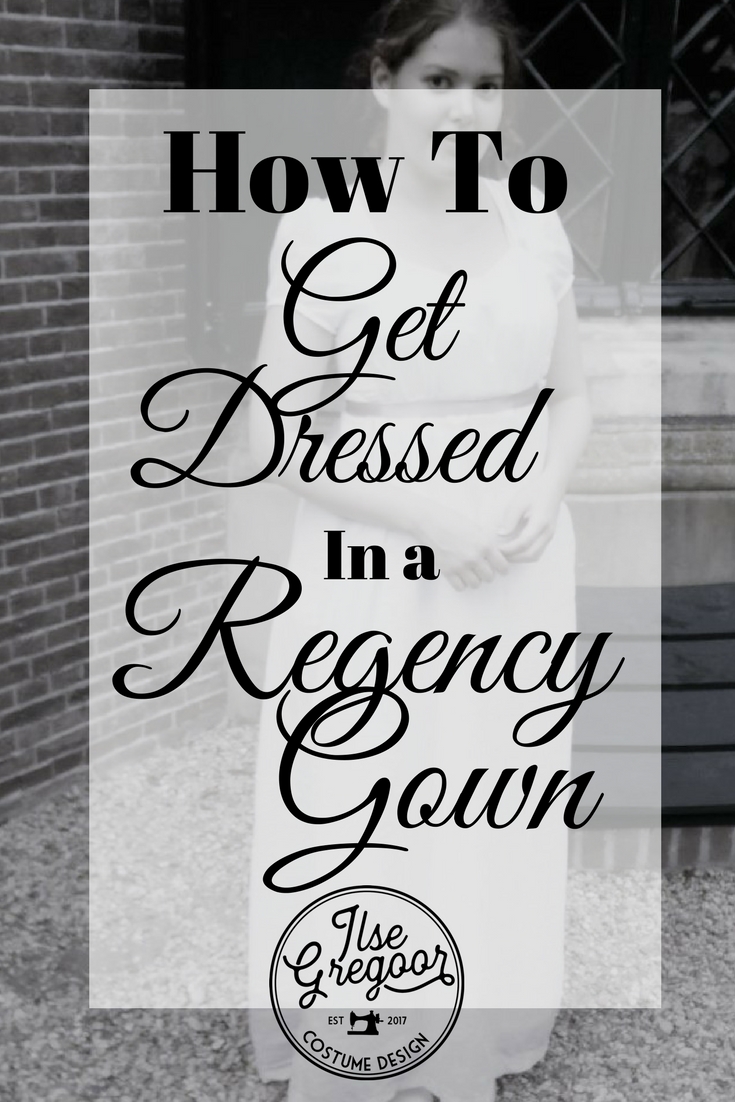Dressing up in an 1802 Empire Gown

The Layers
The first layer in almost every historic outfit in pretty much every time period was the chemise. Mine was a quite simple sleeveless one, because I didn’t want it to show through the sleeves of the outer dress. You can read more about chemises here. Next were the shoes. This may seem weird, because most of us put our shoes on last these days. But in the time of more rigid undergarments the general rule is: shoes before corset. Now in this period, the corsets aren’t boned and not that stiff. So you could easily put on your shoes last if you wised, But in most time periodes, it’s just easier to put on your shoes first. The shoes worn here are simple beige leather flats (heels were not so popular during this time) and close with ribbons
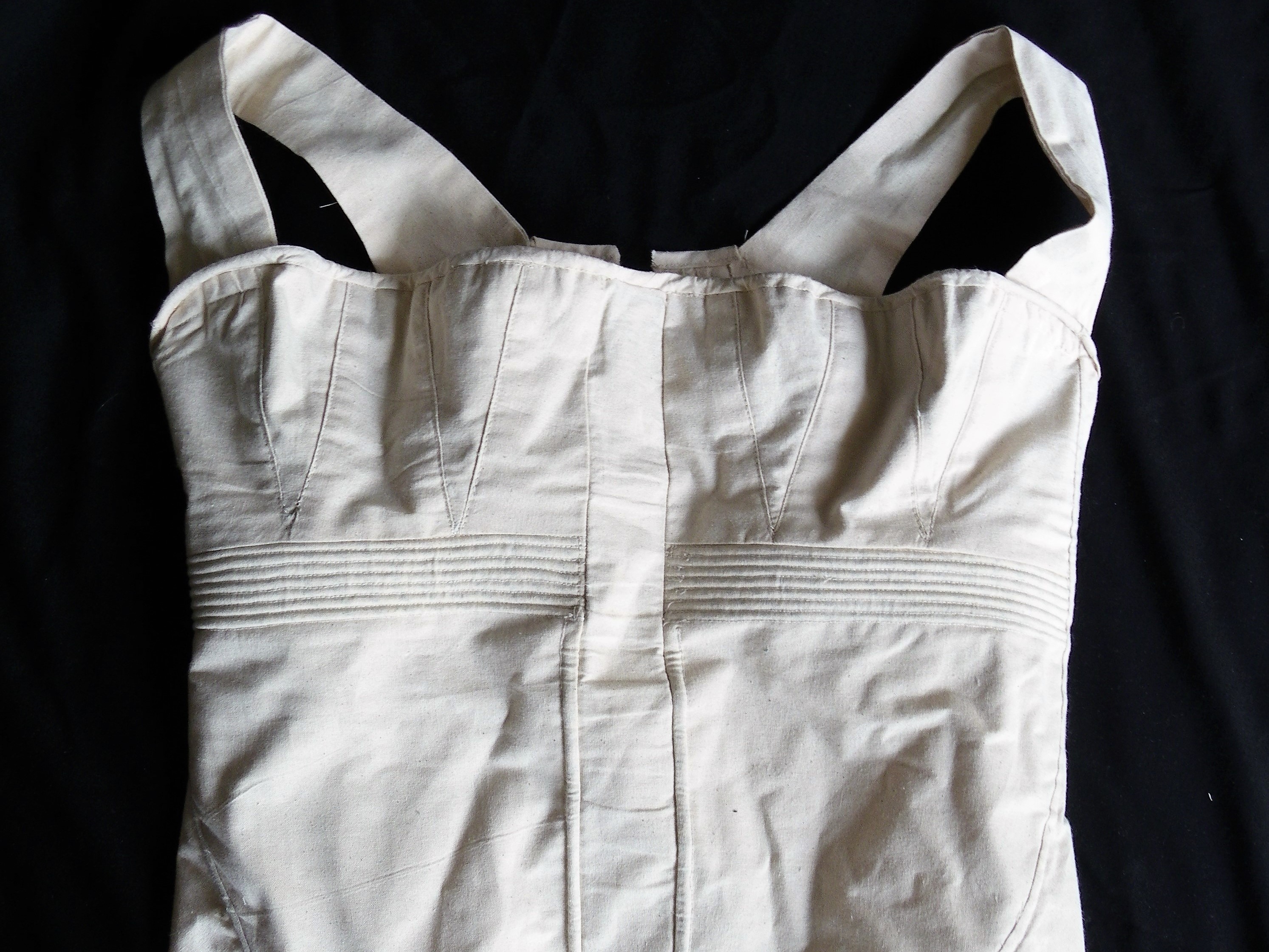
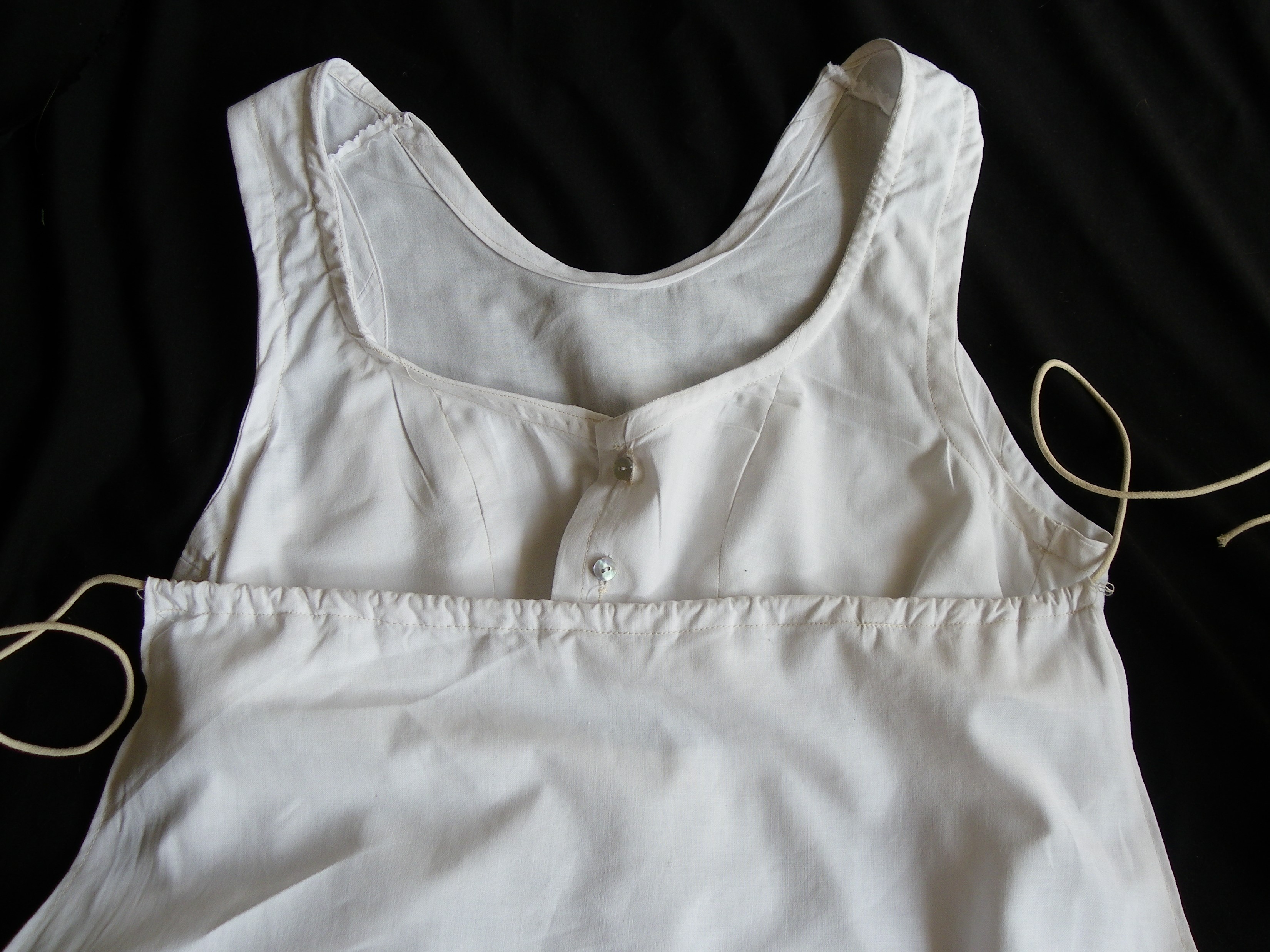
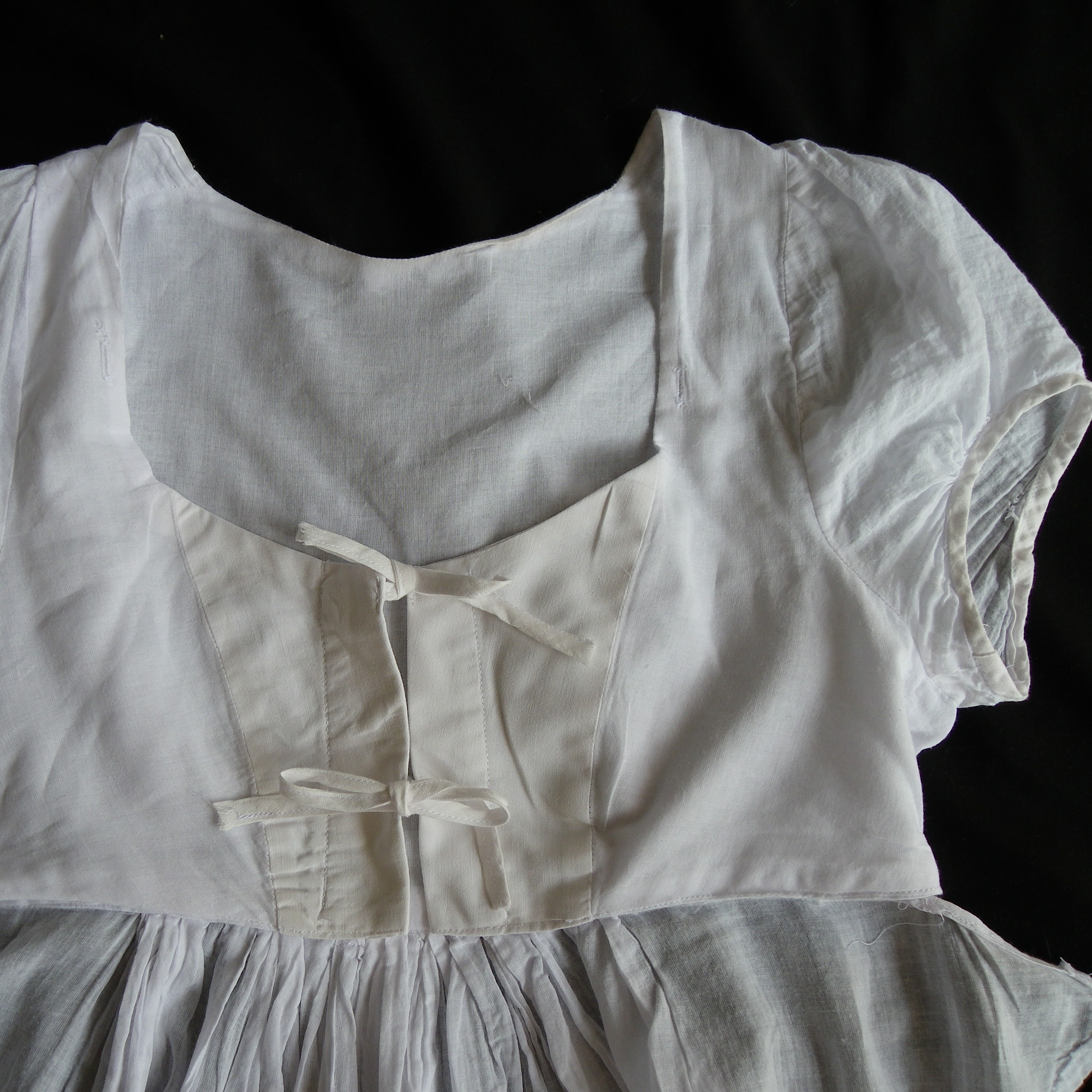
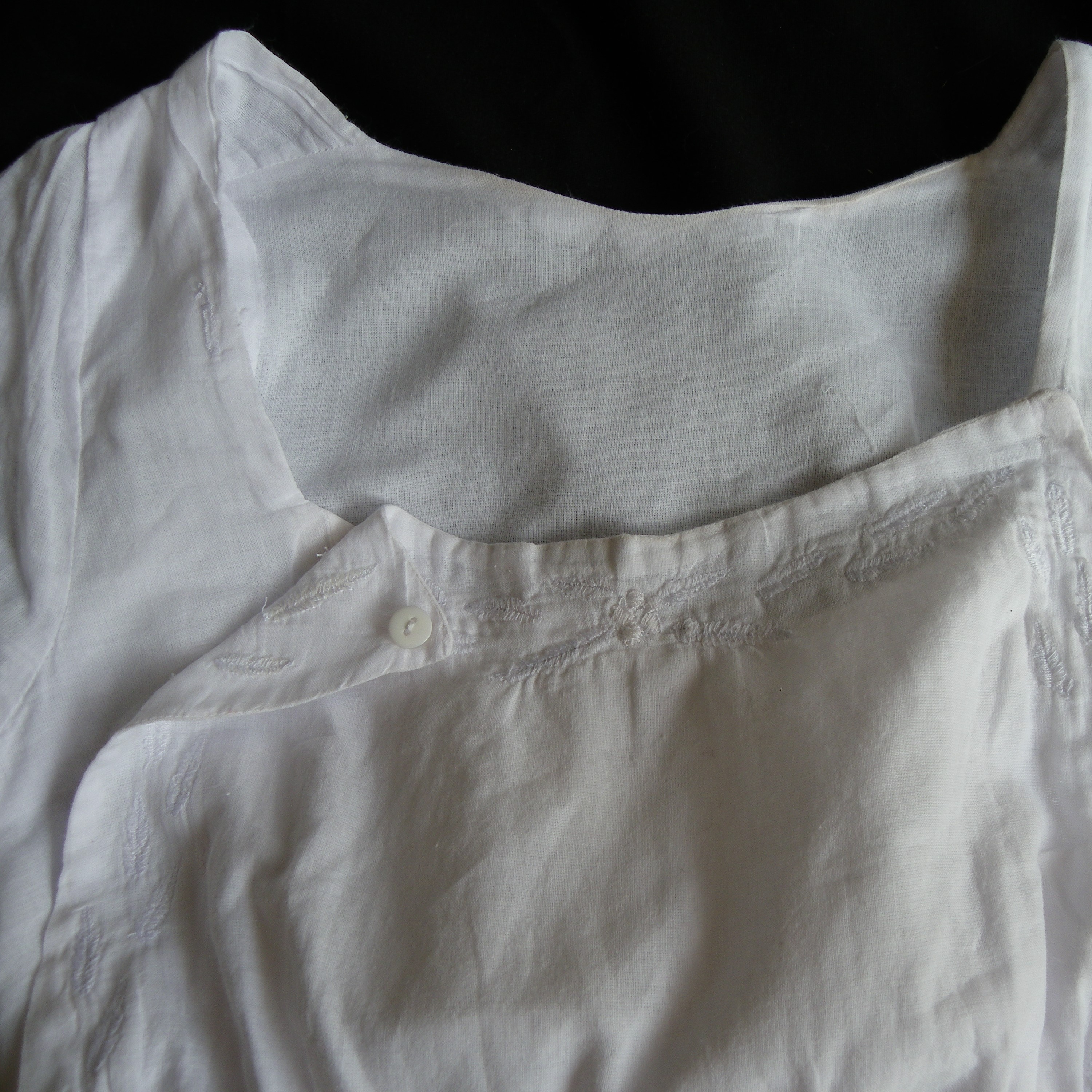
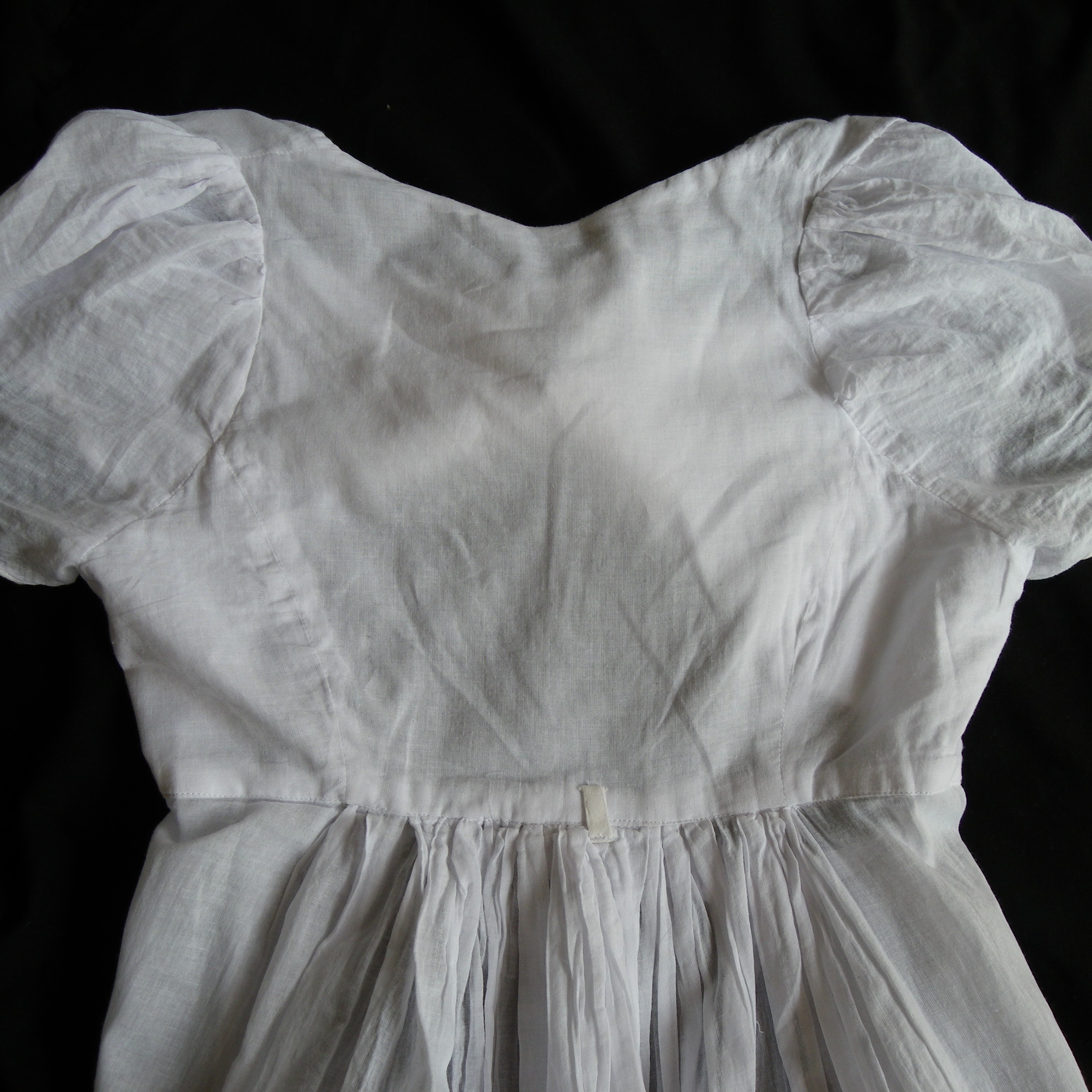
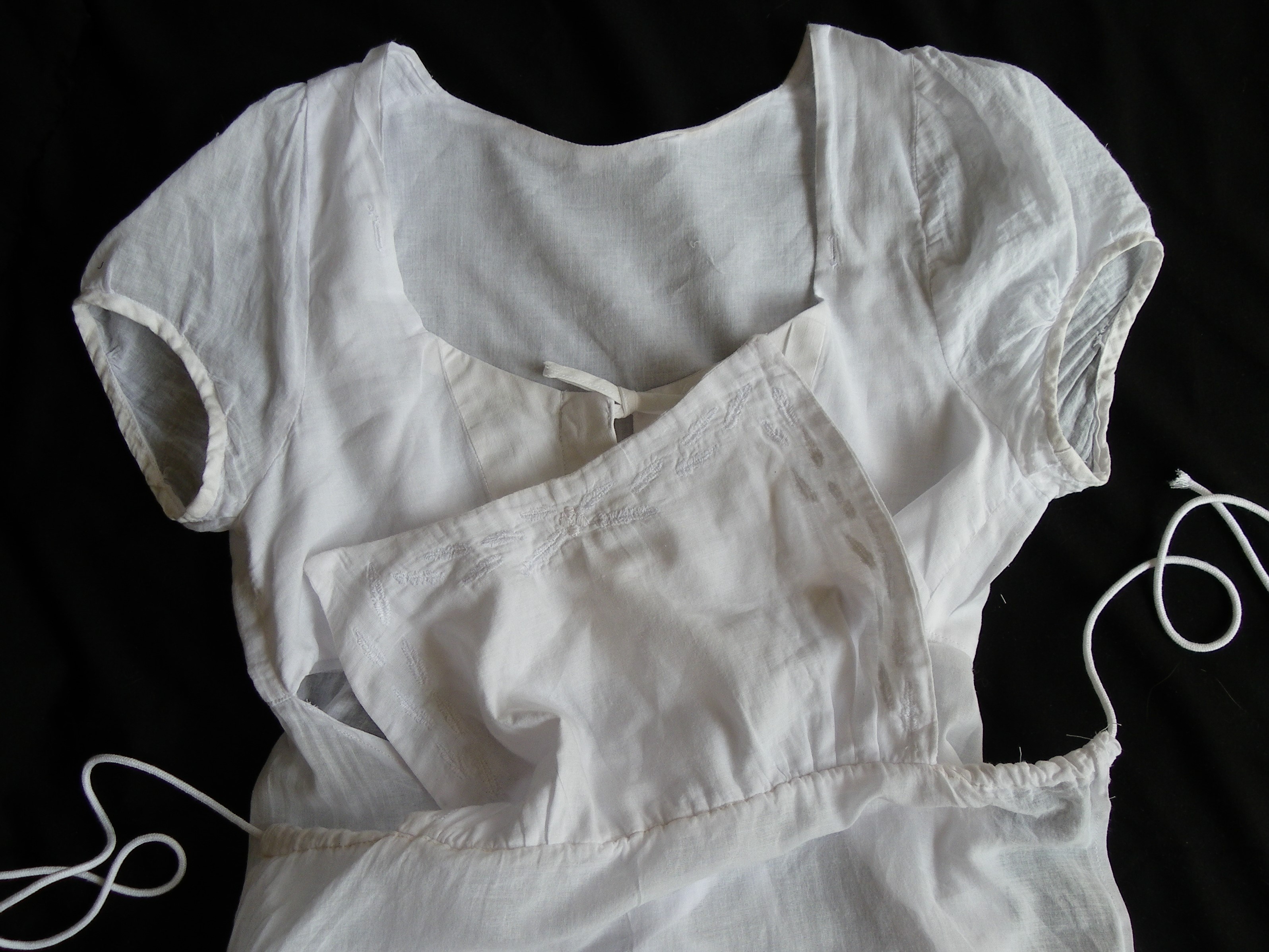
Lastly, the outfit is finished by every regency ladies favorite accessory: a ribbon. Ribbons can add a bit of color and variation to the outfits of Regency ladies, and they were worn as garters, around the waist and in their hair.
The Result
